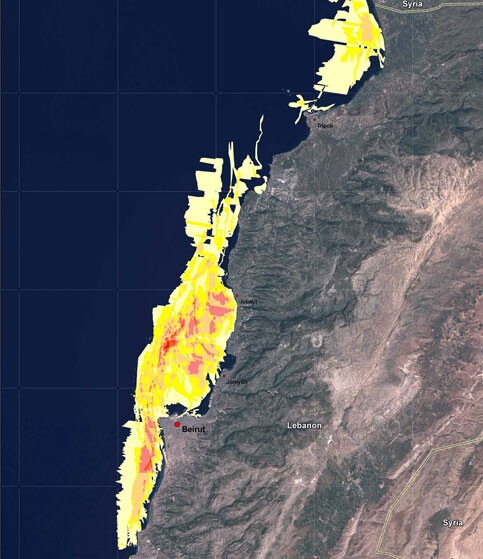United Nations News Service 21 August 2006

Oil spill extent between July 21 and August 10, 2006. (Center for Satellite Based Crisis Information)
Following assurances from Israeli authorities of safe passage for its flights, the UN’s Environmental Programme (UNEP) is swiftly moving to begin aerial surveys of the massive oil spill that affected some 150 kilometres of Lebanese and Syrian coastline.
An estimated 10,000 to 15,000 tons of oil spewed into the sea after Israeli missiles struck a power utility south of Beirut between 13 and 15 July but because of the recent conflict between Israel and Hizbollah, comprehensive aerial surveillance has not been possible until now.
On Friday UNEP’s Executive Director, Achim Steiner, wrote to Israel’s Minister of Environmental Protection, Gideon Ezra, requesting assurances of safe passage for the flights. Mr. Steiner says he received a reply today offering such guarantees.
“I would like to acknowledge the response by the Israeli authorities giving safe and secure passage of aerial surveillance flights,” said Mr. Steiner. “It is absolutely vital that these are swiftly undertaken to establish the quantity of oil still floating on the sea and to thus tailor the appropriate clean-up response.”
Computer models estimate that some of the oil has evaporated and significant amounts are on shore, but experts are uncertain how much remains at sea.
Last week UN agencies, Mediterranean environment ministers and experts meeting in Athens approved a $64 million action plan to clean up the spill. Among the priorities identified in the plan were aerial surveys to help determine the operation’s next steps.
Related Links